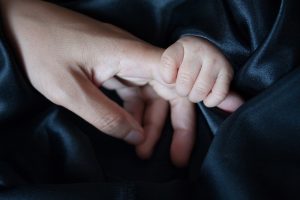As sociologists, we’re interested in how social context often shapes the meaning and implications of major life events like childbearing. In our recent study, we examine how the educational costs of teen births changed for cohorts of women who entered adolescence before, during, and after the major economic, demographic, and cultural changes of the 20th century.
Teen births were “common and unremarkable” during the baby boom of the 1940s and 50s. A relatively large and diverse group of women had children as teenagers. This changed in the 1960s and 70s with women’s increased access to higher education and birth control. These midcentury changes disproportionately expanded socioeconomic opportunities among U.S. women as “women from more-advantaged backgrounds seized the new opportunities and moved ahead quickly.”
As a result, teen births became aligned with the U.S. stratification system as women from more privileged families disproportionately avoided young motherhood as a way to protect their various social advantages.By the end of the twentieth century, a clear socioeconomic bifurcation existed between women who had children in adolescence and women who delayed parenthood until their 20s and 30s.
How did the educational costs of adolescent childbearing change for women who entered adolescence in the latter half of the twentieth century? We hypothesized that differences in the effect of teen births on educational attainment increased as women’s individualized likelihood of adolescent childbearing (given their socioeconomic background) became a more powerful predictor of women’s underlying life chances.
To answer our question and test our hypothesis, we created a dataset with over 15,000 women born between 1922 and 1984 using publicly available data. These data allowed us to compare cohorts of women who grew up with different opportunities, constraints, and attitudes regarding women’s age at first birth and educational attainment.
The largest educational differences between teen mothers and other women were among Millennials (born 1980-84) from more advantaged backgrounds. The educational costs of a teen birth were largest among women with the lowest propensity of a teen birth because these women had the greatest educational potential based on their background. Their child-free counterparts were the highest achieving in terms of education; thus, we suggest that having a teen birth represented a growing opportunity cost for women with the greatest costs among the most recent cohorts.
Our findings support expectations based on the assumption that higher SES families have the material and psychosocial resources to identify and adapt their children’s life course ideals to facilitate upward mobility and the intergenerational transfer of social class. This likely includes prioritizing education through avoiding early childbearing, facilitated through greater resources that allow, for example, easier access to contraception. These dynamics occur within a broader social context reinforcing these messages and goals (e.g., peer groups, teachers and counselors at school, health care providers). These processes may also occur among low-income parents but within a structural environment with fewer supports for continuing education, e.g., fewer economic or educational opportunities, and perhaps even less contraception access.
Traditional discussions of teen births see them as a “social problem” to be avoided because it disrupts education and career advancement. However, our research shows that the meaning of teen births depends on historical context specific within cohorts (e.g., expanding educational opportunities for women) and socioeconomic context specific to individuals (e.g., social class of parents). Rather than focusing only on avoiding teen pregnancy as a way to increase people’s success in higher education, we suggest that our findings point to the change in structural factors that have facilitated certain groups of women being more able to go to college and avoid pregnancy in adolescence.
Joseph D. Wolfe is an Associate Professor of Sociology at the University of Alabama at Birmingham. Learn more about him at his website and follow him on Twitter at @WolfeSociology and BlueSky @jdwolfe.bsky.social for updates about ongoing research.
Mieke Beth Thomeer, PhD is Professor of Sociology at the University of Alabama at Birmingham, and a Deputy Editor at the Journal of Marriage and Family. Follow her @miekebeth


Comments